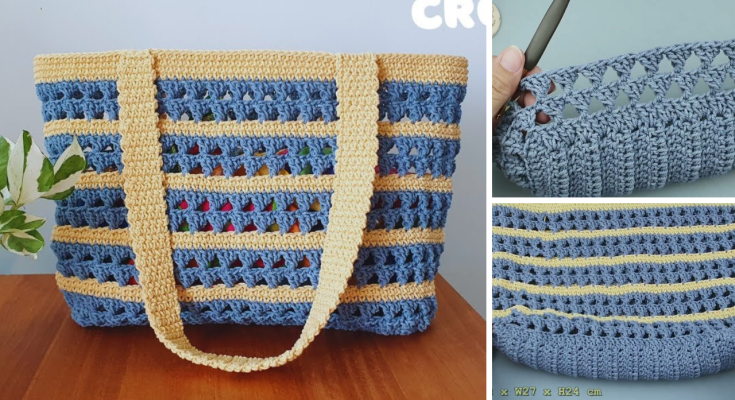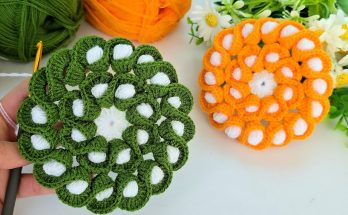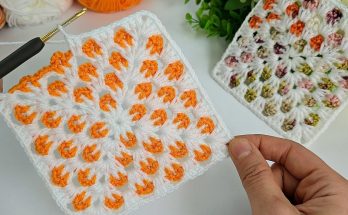In the world of handmade fashion and functional artistry, few items capture the heart quite like a crochet tote bag. With its rich texture, customizable design, and eco-friendly nature, the crochet tote bag has become more than just a craft project—it’s a statement piece that reflects both personal style and sustainable living. From its humble origins to its contemporary place in high fashion and everyday life, the crochet tote is a testament to the enduring appeal of slow, thoughtful craftsmanship.
A Brief History of Crochet
Before diving into the specific allure of tote bags, it’s worth understanding the broader history of crochet. The word “crochet” comes from the French word for “hook,” which refers to the hooked needle used in the process. Though the origins of crochet are somewhat murky, most historians trace its rise to early 19th-century Europe. It quickly became a popular pastime, particularly among women, due to its accessibility and portability.
Unlike knitting, which often requires two needles and can be more complex, crochet uses a single hook to interlock loops of yarn, thread, or other materials. This simplicity made it an ideal technique for creating a wide range of goods, from household items to clothing and accessories.
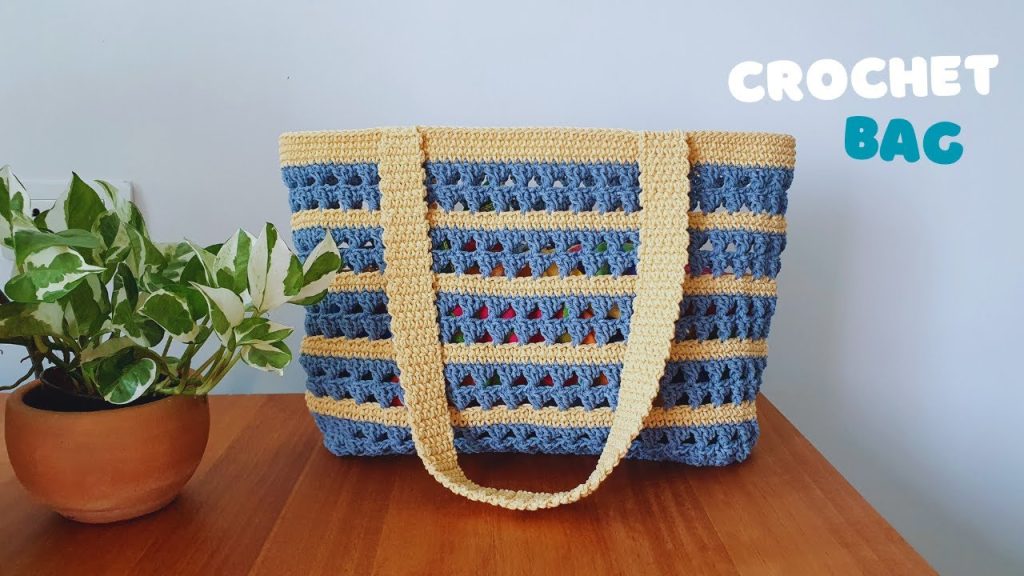
The Rise of the Crochet Tote Bag
The tote bag itself has a functional origin, originally designed for carrying items easily thanks to its large, open top and durable handles. When married with crochet, the tote becomes both practical and artistic. These bags began gaining popularity in the 1960s and 70s, aligning with the rise of the counterculture and the handmade revolution. The appeal of a handcrafted bag—especially one made from natural fibers like cotton or jute—spoke to a growing interest in individuality and eco-consciousness.
Fast forward to the 21st century, and the crochet tote bag has made a full-circle comeback, boosted by social media, sustainability movements, and a renewed interest in crafts and DIY fashion.
Why Choose a Crochet Tote Bag?
There are many reasons why crochet tote bags continue to charm wearers around the world:
1. Eco-Friendly
Unlike synthetic, mass-produced bags, crochet totes can be made from natural or recycled fibers. They promote a culture of reuse and sustainability, especially when used as shopping or produce bags.
2. Customizable Design
Crochet allows for infinite creativity. Makers can choose from an array of stitches, colors, patterns, and embellishments. Whether you prefer a minimalist cream-colored tote or a vibrant boho-inspired bag, the options are limitless.
3. Durability
When made with strong yarns and proper tension, crochet bags can be incredibly sturdy. Many designs incorporate reinforced bases or tightly woven stitches that can hold heavier items.
4. Handmade Appeal
In an age of fast fashion, a handmade crochet tote carries a sense of authenticity and craftsmanship. It’s not just a bag—it’s a labor of love.
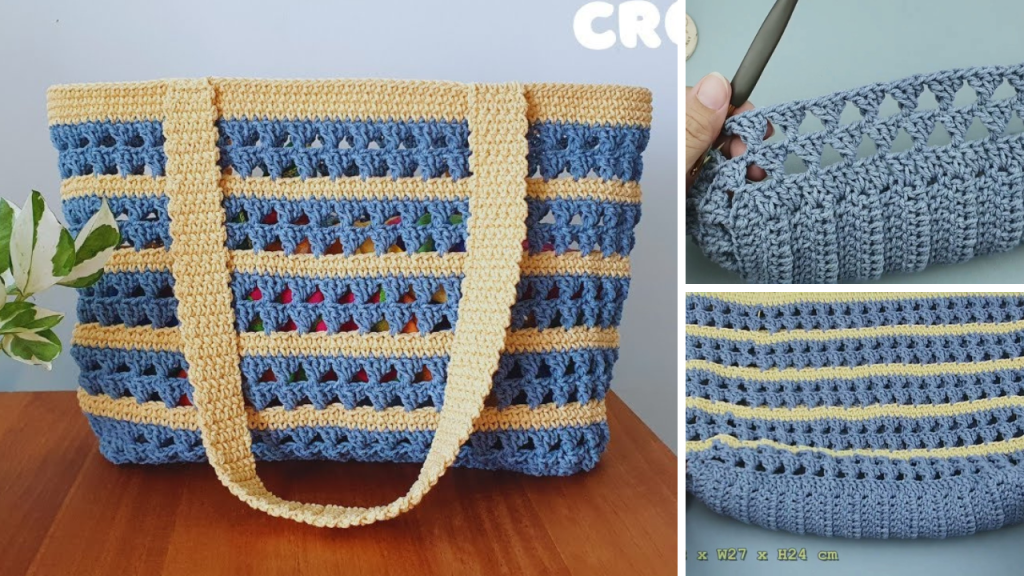
Common Styles and Patterns
Crochet tote bags come in a variety of styles, each with its own purpose and charm:
1. Mesh Market Bags
These are lightweight, stretchable, and perfect for grocery runs or farmer’s markets. The mesh design allows the bag to expand, holding fruits, vegetables, or other items without losing shape.
2. Granny Square Totes
Granny squares are a cornerstone of crochet culture. Assembled in colorful patchwork styles, these bags are eye-catching and nostalgic, often associated with 70s fashion.
3. Solid Tote Bags
With dense stitches like single or half-double crochet, these bags offer a more structured look. They often include linings and zippers for additional functionality.
4. Beach Totes
Crocheted with water-resistant yarns or treated cotton, beach totes are designed to hold towels, swimsuits, and sunscreen, while allowing sand to sift through.
5. Boho Chic Styles
Fringe, tassels, beads, and mandala designs are common features in boho-style crochet totes. These are typically fashion-forward and festival-ready.
Popular Crochet Stitches for Tote Bags
Each stitch offers a unique texture and strength. Some of the most commonly used include:
- Single Crochet (sc): Tightly woven and ideal for sturdy bags.
- Half Double Crochet (hdc): Faster to work up and provides a good balance of tightness and flexibility.
- Shell Stitch: Decorative and commonly used in border or accent areas.
- Granny Stitch: Made from clusters, this is perfect for patchwork designs.
- Star Stitch: Adds a beautiful texture that looks intricate but is relatively easy to learn.
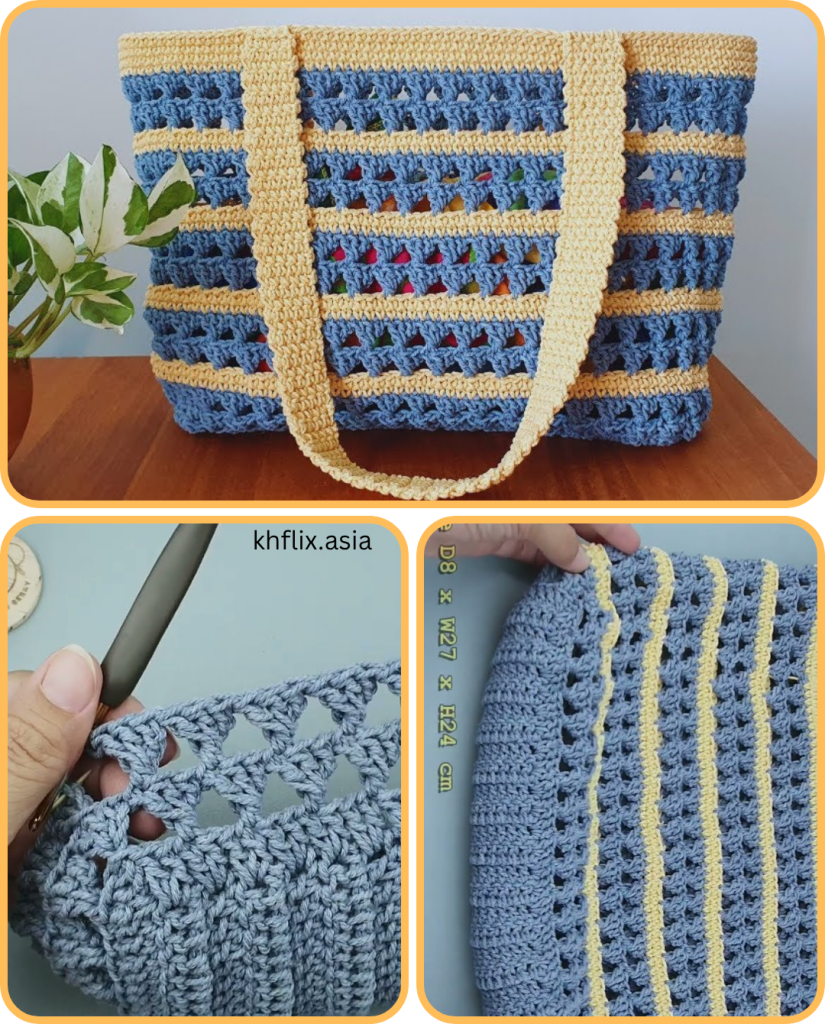
🧶 Easy Crochet Tote Bag – Step-by-Step Instructions
✅ Skill Level: Beginner
⏱️ Estimated Time: 3–6 hours
📏 Finished Size: Approx. 14″ wide x 13″ tall (without handles)
✂️ Materials You’ll Need
| Item | Details |
|---|---|
| Yarn | 2–3 skeins of Worsted Weight Cotton Yarn (like Lily Sugar’n Cream) |
| Crochet Hook | Size H (5.0 mm) |
| Scissors | Any standard scissors |
| Yarn Needle | For weaving in ends |
| Stitch Markers | Optional but helpful for marking rounds |
🧵 Abbreviations (U.S. Terms)
| Abbreviation | Meaning |
|---|---|
| ch | chain |
| sc | single crochet |
| hdc | half double crochet |
| sl st | slip stitch |
| st | stitch |
| rnd | round |
🏗️ Pattern Structure
The bag is worked in three parts:
- Base – worked flat in rows
- Body – worked in continuous rounds
- Handles – crocheted as part of the upper edge
🧶 Crochet Tote Bag Pattern
1️⃣ Make the Base (flat rectangle)
Ch 41 (or your desired width)
Row 1: Sc in 2nd ch from hook and in each ch across (40 sc). Ch 1, turn.
Rows 2–10: Sc in each st across. Ch 1, turn.
➡️ You now have a rectangle base.
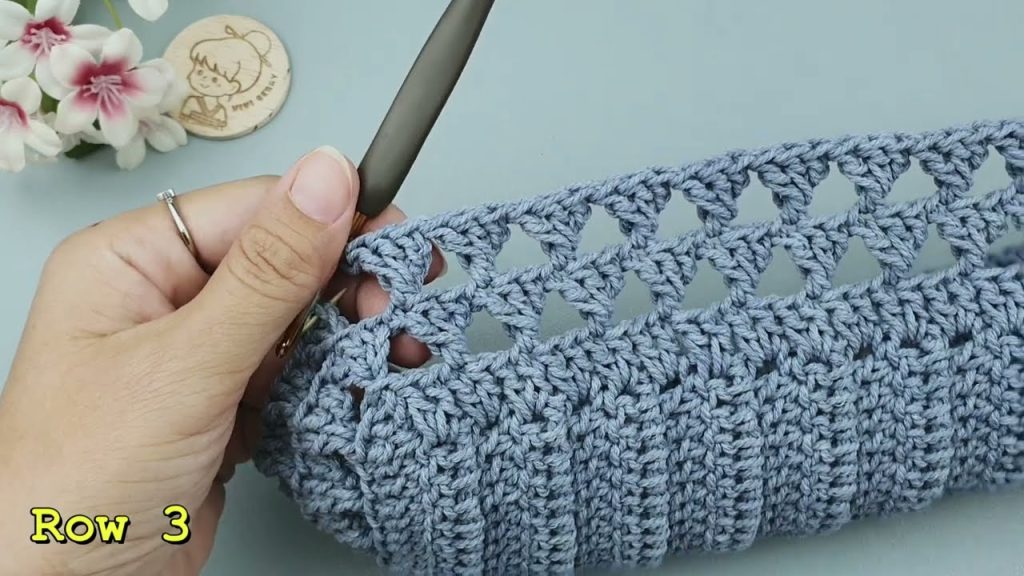
2️⃣ Start the Body (in the round)
Round 1:
- Sc around the entire rectangle (working 1 sc in each st, and 2 sc in each corner).
- Use a stitch marker to mark the beginning of the round.
Round 2 – 28:
- Hdc in each st around.
- Continue in spiral rounds without joining.
- Optional: Change colors or add stripes as you go.
➡️ Adjust the number of rounds to make the bag taller or shorter.
3️⃣ Shape the Top + Add Handles
Next Round (Start Handles):
Hdc in next 8 sts, ch 30 (handle), skip next 10 sts,
hdc in next 20 sts, ch 30 (handle), skip next 10 sts,
hdc to end of round.
Next Round:
- Hdc in each stitch and chain across (so you’re working into the handle chains).
- Continue 2 more rounds of hdc to strengthen handles.
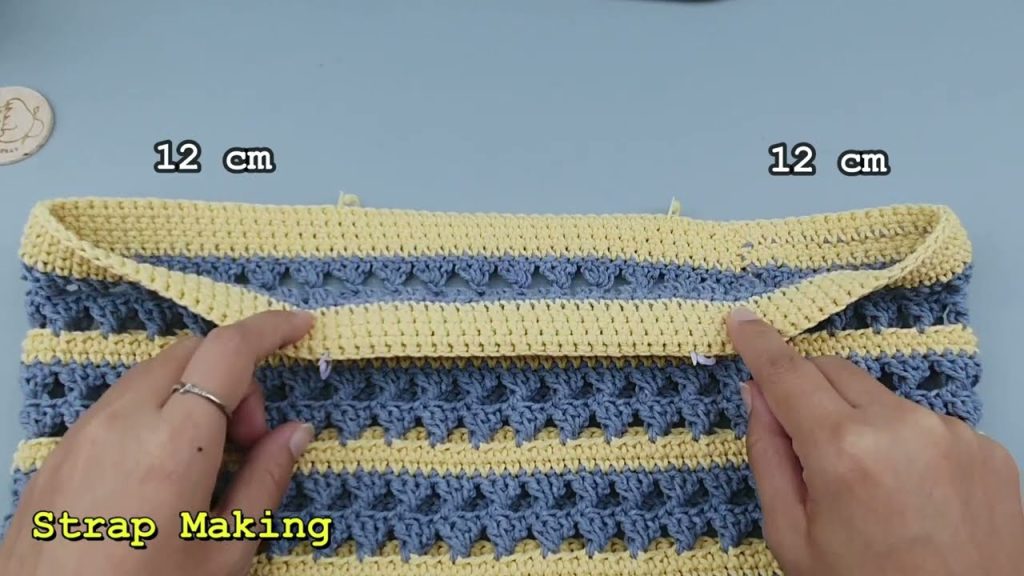
4️⃣ Finishing
- Sl st to finish the last round.
- Fasten off yarn.
- Use a yarn needle to weave in all loose ends.
- Optionally, block your bag (wet it lightly, shape it, and let it dry flat).
🧼 Care Tips
- Machine Washable: Yes, if using cotton yarn. Use cold water and a delicate cycle.
- Dry: Lay flat to avoid stretching.
- Re-shape while drying if needed.
✨ Optional Add-ons
- Lining: Sew in a fabric lining for added durability.
- Zipper or Button: Add a closure to secure contents.
- Embellishments: Add tassels, pom-poms, or even embroidery for extra flair.
👜 Finished Look
You now have a sturdy, eco-friendly, and handmade crochet tote bag! Use it for groceries, books, beach trips, or as a chic everyday accessory.
Caring for Your Crochet Tote Bag
Proper care will ensure your tote lasts for years:
- Washing: Hand-wash or use the gentle cycle with mild detergent.
- Drying: Lay flat to dry to maintain shape.
- Storage: Keep in a cool, dry place; avoid hanging for long periods if heavy items have been stored inside.
- Repairs: Crochet is relatively easy to repair. Keep extra yarn from your project for future mending.
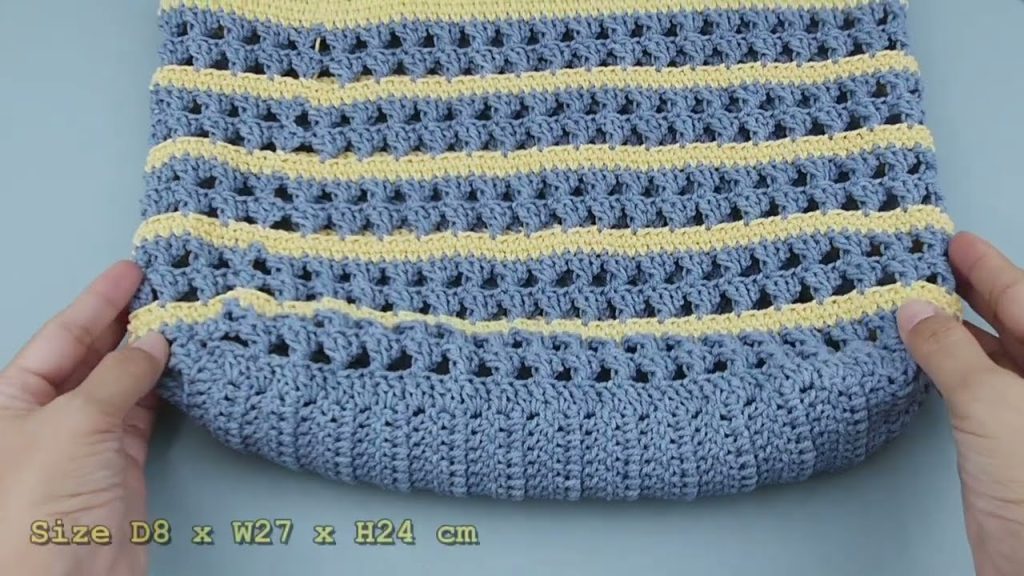
Final Thoughts
The crochet tote bag is more than a simple accessory—it’s a celebration of craft, sustainability, and personal expression. Whether you’re making your first bag as a beginner or designing complex patterns as an experienced crocheter, each stitch tells a story. In a world increasingly dominated by fast fashion and throwaway culture, embracing handmade crochet totes offers a refreshing return to creativity, care, and consciousness.
So whether you’re crafting one for yourself, gifting it to a friend, or selling them at your local market, remember: every crochet tote bag is one-of-a-kind—just like the hands that made it.
Video tutorial:
